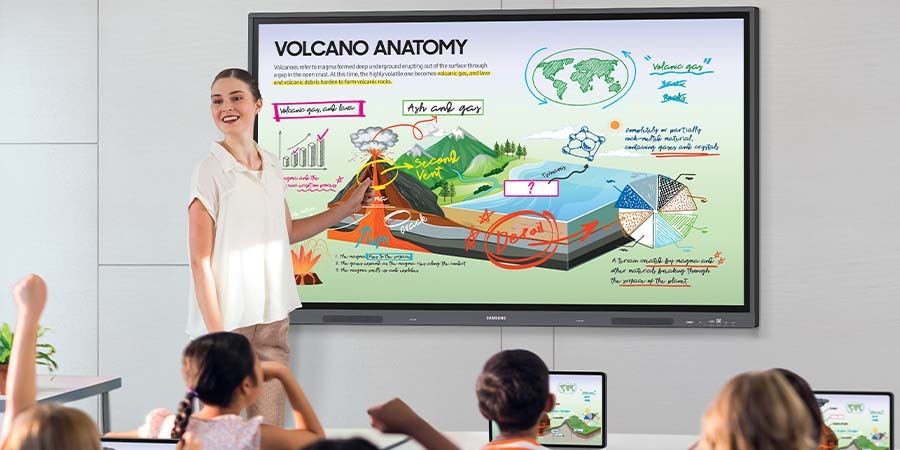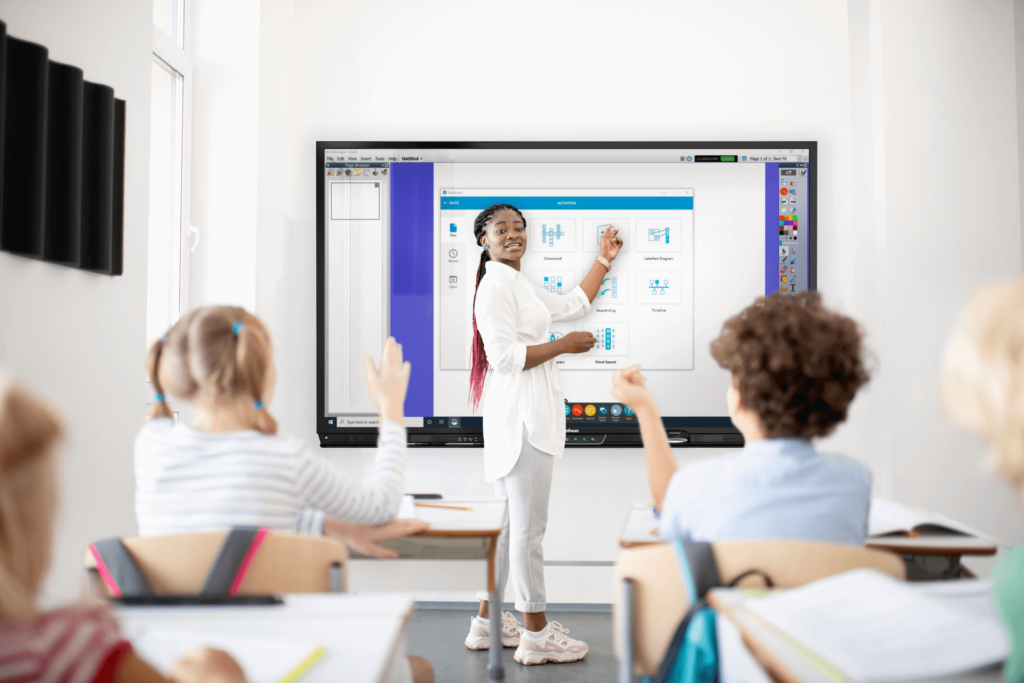Interactive Whiteboard vs Traditional whiteboard.
In the ever-evolving landscape of education and professional environments, the tools we use to communicate and collaborate play a crucial role in shaping how we teach, learn, and work.
At the heart of this transformation is the age-old debate between traditional whiteboards and their technologically advanced counterpart: interactive whiteboards. As schools and offices navigate the decision between these two options, it’s essential to explore the trends, benefits, and drawbacks associated with each.
From fostering engagement in classrooms to enhancing productivity in boardrooms, understanding the evolving preferences and applications of these tools is vital for creating dynamic learning and working environments. Join us as we delve into the comparative analysis of interactive whiteboards versus traditional whiteboards, uncovering the trends that are reshaping educational and professional landscapes.
Table of Contents
Overview of Whiteboard Technologies
Whiteboard technologies have long been a staple in both educational and professional settings, serving as versatile tools for visual communication and collaboration. Traditional whiteboards, typically composed of a glossy white surface, are used with dry-erase markers, allowing for the quick jotting down of notes, diagrams, and ideas.
On the other hand, interactive whiteboards represent a more recent innovation, integrating digital capabilities such as touch-screen interfaces, interactive software, and connectivity with other devices. These advancements enable users to engage in interactive presentations, manipulate digital content, and access a myriad of educational resources with just a touch. As technology continues to advance, the landscape of whiteboard technologies evolves, presenting users with a range of options to suit their specific needs and preferences. If you’re interested in exploring our latest innovations in interactive whiteboard technology.

Advantages of Traditional Whiteboards
Traditional whiteboards offer several advantages that have solidified their presence in classrooms and offices worldwide. Firstly, they are simple to use and require minimal setup, making them accessible to users of all technological proficiencies.
Their low cost and ease of maintenance make them a cost-effective solution for institutions with budgetary constraints. Additionally, traditional whiteboards promote real-time interaction and collaboration, as users can easily write, erase, and modify content during discussions or brainstorming sessions.
Moreover, their tactile nature provides a tangible medium for creativity, allowing users to sketch diagrams, equations, or illustrations with ease. Finally, traditional whiteboards do not rely on electricity or complex software, ensuring reliability and uninterrupted use even in areas with limited technological infrastructure. These advantages highlight the enduring appeal and practicality of traditional whiteboards in various educational and professional environments.

Advantages of Interactive Whiteboards
Interactive whiteboards represent a significant leap forward in visual communication and collaboration, offering a multitude of advantages over traditional whiteboards. Firstly, their interactive capabilities foster engaging and dynamic presentations, allowing presenters to manipulate digital content, annotate slides, and incorporate multimedia elements with ease.
This interactivity enhances audience participation and retention, making lessons and presentations more effective. Additionally, interactive whiteboards often come equipped with specialized software and connectivity options, enabling seamless integration with other digital devices and online resources.
This facilitates access to a wealth of educational materials, interactive learning modules, and collaborative tools, enriching the learning experience for students and professionals alike. Furthermore, interactive whiteboards can record and save presentations, making it easy to review or share content later.Finally, their versatility and adaptability make them suitable for various teaching styles, learning environments, and professional applications, positioning them as indispensable tools in modern classrooms and boardrooms.

Workplace Dynamics: Whiteboard Trends in Professional Arenas
In professional arenas, the utilization of whiteboard technologies reflects the evolving dynamics of workplace collaboration and communication. Traditional whiteboards, despite their simplicity, continue to hold significance in boardrooms, conference halls, and collaborative spaces across industries.
Their tactile nature encourages brainstorming sessions, strategic planning, and problem-solving exercises, fostering a sense of teamwork and creativity among colleagues. Moreover, traditional whiteboards offer a versatile platform for visualizing ideas, workflows, and project timelines, facilitating efficient communication and decision-making processes.
However, with the advent of digital transformation, interactive whiteboards are gaining traction in professional settings. These advanced tools enable seamless integration with digital documents, video conferencing systems, and collaborative software, enhancing productivity and remote collaboration capabilities. As workplaces embrace hybrid and flexible work arrangements, the integration of interactive whiteboards into office environments is expected to continue, shaping the future of professional collaboration.

Interactive Whiteboard vs. Whiteboard: Choosing the Right Whiteboard for Your Needs
Here’s a quick comparison to help you decide which whiteboard is best suited for your needs:
| Feature | Whiteboard | Interactive Whiteboard |
| Cost | Medium | Affordable Nowadays |
| Setup | Simple | Slightly more complex |
| Functionality | Basic writing & drawing | Extensive – multimedia, annotation, projection, presentation and many more |
| Interactivity | No | Yes – touch-based and multi-device interaction |
| Content Storage | No (physical notes) | Digital (save & share) |
| Maintenance | Wear and tear | May require maintenance normally comes with warranty |
| Suitability for | Brainstorming, basic presentations | Collaborative learning, presentations, complex planning, multimedia integration, education , multi-person collaboration, virtual/physical meeting |
| Visual Appeal | Encourages physical interaction | Offers wider image /video/PPT based visual options |
| User Experience | Familiar and simple | Can vary depending on model. Branded products with local warranty are recommended |
| Camera Speaker Tracking | No | Yes |
Disclaimer: The following information is sourced from Vue Digital Signage, and we do not claim ownership of the content.
In a comprehensive Interactive Whiteboard vs Whiteboard: The Trend in School and Office by Vue Digital Signage, various features and specifications were evaluated. According to their findings. This comparison underscores the importance of choosing the right interactive whiteboard for your needs. You can explore the full comparison on Vue Digital Signage’s website: Interactive Whiteboard vs Whiteboard: The Trend in School and Office
